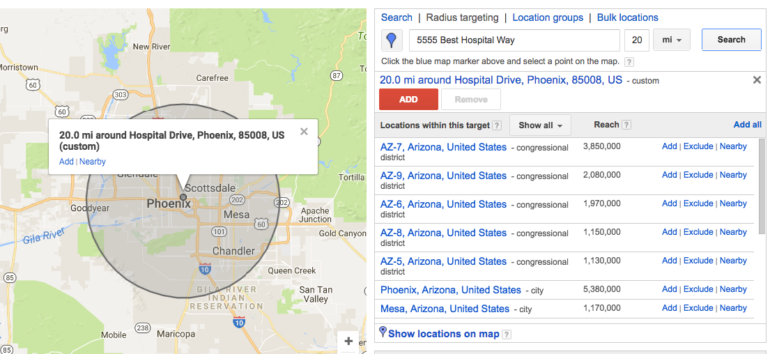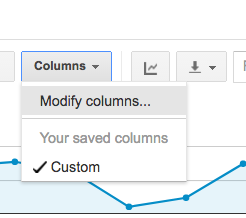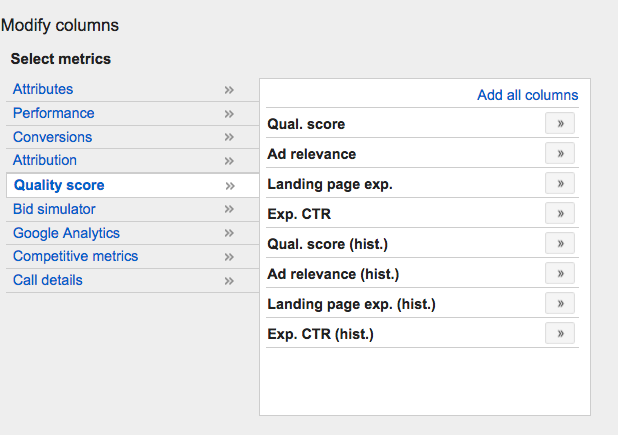July 19, 2017
In this week’s PPC Advice column, we dodge the hurdles of healthcare remarketing and ponder the age old digital marketing question of how to improve quality score and impression share. Read on to see your questions answered!
Dear Dani,
I work for a healthcare system with multiple hospitals and clinics across a number of states. Due to restrictions about patient privacy, we’re limited in the types of remarketing efforts we can undertake. Aside from opt-in email, are there ways we can use remarketing on Facebook, AdWords Search, and Display?
Sincerely,
-Stuck behind HIPPA red tape.
Dear Stuck Behind HIPPA Red Tape,
You are not alone in this struggle. While I am no HIPPA expert, Google and Facebook have a hard line about disapproving ads that could disclose “personally identifiable information.” For the privacy of users, this is a good thing, but it does create barriers for advertisers. Display Ads targeting specific health concerns are completely off the table. However, the silver lining in Google is RLSA Campaigns. Read Show Returning Visitors Extra Love Through RLSA to learn more about RLSA best practices and uses. RLSA allows you to bid up on, or only show ads to specific “audiences” that you create. This is not difficult to set up in your account provided you have a Google remarketing tag established. A No Nonsense Pros and Cons List For RLSA Implementation can help you get set up. For example, you can create lists based on specialty pages (or any factors you desire). So, if someone visited a page about gastro-intestinal care providers you can cookie them and bid up on showing them an ad if they go back to Google and search on similar keywords. By adding a heavy duty bid modifier on these audiences (think 50% +) you can potentially get your ad in front of them at a high position, increasing the likelihood of getting the click. Due to Google’s rules, you could not call-out ailment specific copy, but you could cleverly dress an ad to promote the features and benefits of going with your GI facility over the competition. You’ll have to get creative here with your copy, but this is one way of re-capturing a “warm” audience.
Facebook Remarketing is also simple to establish once you have implemented the Facebook pixel on your site. Like Google, you can create specific audiences using different qualifiers that you determine. Check out A Primer On Facebook Remarketing for a more detailed view. Again, there are heavy policies around making sure there is no “personally identifiable information,” but with Facebook you can get even more clever. For example, you could test an ad to a remarketing audience that features a video testimonial of someone who has received treatment and has experienced an increase in the quality of life as a result (this would of course require this individual’s legal permission, always check with legal!). However, since this is a specific person telling their story with permission, it falls outside of the traditional rule. If these resources are available to you, it is worth a shot! Creativity will be key here.
Dear Dani,
I work for a healthcare system. We often run marketing campaigns for specific healthcare specialties that target small geographic areas. Sometimes these campaigns are quite niche and our overall traffic is low; meaning our AdWords account as a whole barely gets enough data to properly optimize before the campaign is nearly half over.
I strive to set up my AdWords search account properly –segment ad groups (or campaigns) by keyword match type, tightly focused keyword themes, etc. –but this further divides the already small pool of data. Is there a way to overcome this or work with the data in spite of the limitation?
Sincerely,
-Caught in data catch-22
Dear Caught In Data Catch-22,
Low traffic is the bane of marketing existence. The good news is that there are a handful of tests you can run to help boost your traffic in Google:
- Try broadening your geographic targets to make sure they match your client needs. Ask yourself how far folks are willing to travel to get to one of your facilities. Maybe it’s the only one in the state for the specialty they need, so you can expand your geographic targeting to be more accommodating. For example, you can advertise to an entire state or large region, but add bid modifiers within a certain radius to a facility using Google’s radius targeting feature. So, what you’re saying is, show ads to everyone in the selected region, but especially promote my ads to folks within a certain radius of my facility if they’re searching my terms. Here’s how to set it up:
From the Campaigns page, select the “Settings” tab, then click on “Locations”

Click +Locations

Select Your Ad Group, then click “Advanced Search”

From here, click on “radius targeting” and enter the address to the facility you want to add. (This address is hypothetical). When you’ve finished select “add.”

You will see the address in your locations tab, where you can add your bid modifier:

A few other tips:
- Make sure you’re testing a variety of broad match keywords. If the specialty is super niche, ensure that you’re bidding on all variations of the specialty, including acronyms. For example, for GI specialties, you could try bidding on broad terms like “stomach doctor” as a higher funnel effort.
- You could test a Display effort using your current targeting with additional parameters such as custom affinity targeting and contextual keyword targeting to generate brand awareness and traffic to your site to audiences that you’ve refined.
As with all marketing efforts, make sure that you have clear goals in mind along with how you will measure success.
Dear Dani
I am struggling to get higher impression share and quality score. All my relevant keywords which are highly optimized with relevant ad group ad copy and landing page are also at Quality score of 6 or 7. My question is how to get 9-10 quality score and bang on impression share.
Amit
Dear Amit,
First, I love the term, “Bang on impression share!” As marketers, we all want this coupled with a high quality score because that makes us untouchable by the competition! Impression share is largely affected by your bid and your quality score, which helps determine your ad rank. So, there’s that whole chicken and egg thing. You’re spot on in ensuring that your keywords are segmented into tightly themed ad groups that have congruent ads and landing pages, so keep that up as a best practice.
There is no perfect formula for how to ascend the quality score ladder, even though Google assures us that there are 3 factors that determine quality score:
- Expected CTR
- Ad relevance
- Landing page experience
These factors are further influenced by past performance data and page load times. These are wildcards. Try using a tool like WebpageTest to determine if you can improve your page load time and therefore your landing page experience.
As benchmarks go, 6’s and 7’s are not terrible quality scores. I typically see the highest quality scores in Branded campaigns, which makes perfect sense.
Google recently added a few new quality score status columns to the AdWords interface that are worth checking out if you haven’t already to see how Google thinks you can improve. To see these, from the Campaign page, click on the keywords tab:

Next, click on the Columns menu and select “modify columns.”

From here you will see the data columns you can add. Select “Quality Score” and the full menu of options will be revealed to the right including Quality Score, Ad Relevance, Landing Page, Experience, Expected CTR and historical versions of all the above. Pull these into your keyword report and see how Google assesses your ads. Use this information to guide your optimizations.

Quality Score is a long game, it’s not something that responds quickly to account changes. It takes time, historical data, and continual monitoring to really nail it. Hang in there!